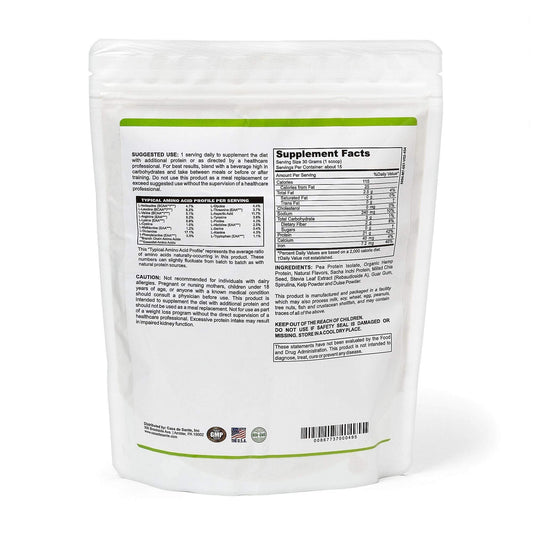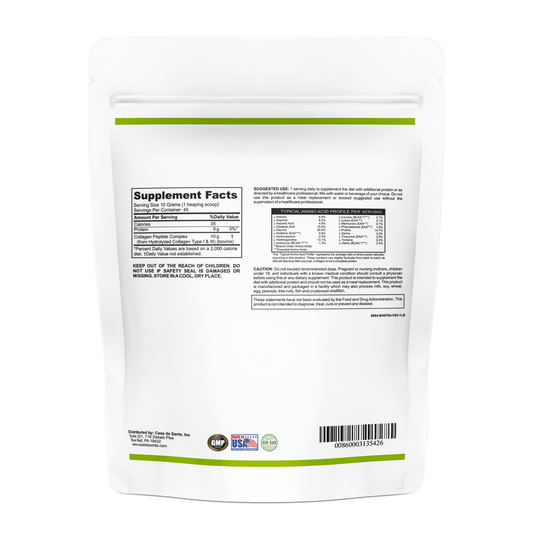Middle-Of-The-Night Flares: A Nightmare
Middle-of-the-night flares can be a terrifying experience for those who suffer from them. These sudden and intense episodes of pain can disrupt sleep patterns and leave individuals feeling exhausted and vulnerable. Understanding the causes, coping mechanisms, prevention strategies, and long-term effects of night flares is essential in managing this distressing condition.
Understanding Middle-Of-The-Night Flares
When it comes to understanding middle-of-the-night flares, it is essential to examine both the scientific and psychological aspects of this phenomenon.
Imagine drifting off into a peaceful slumber, only to be abruptly awakened by a surge of intense pain coursing through your body. This is the reality for many individuals who experience middle-of-the-night flares, also known as nocturnal flares. These episodes of sudden pain can disrupt sleep, leaving individuals feeling exhausted and frustrated.
The Science Behind Night Flares
Delving into the scientific realm, researchers have been trying to unravel the mysteries behind night flares. It is believed that these flares can be triggered by a combination of underlying health conditions and environmental factors.
During sleep, the body's pain threshold lowers, making individuals more susceptible to heightened sensitivity and inflammation. This means that even minor triggers that may not cause significant discomfort during the day can lead to excruciating pain at night. Factors such as weather changes, poor sleep posture, or an inadequate sleep environment can contribute to the occurrence of night flares.
For example, individuals with conditions such as rheumatoid arthritis or fibromyalgia may experience increased pain during the night due to the body's natural circadian rhythm. Additionally, sleeping in a cold room or on an uncomfortable mattress can exacerbate pain symptoms, leading to a night filled with flares.
Psychological Impact of Night Flares
While the physical aspects of night flares are challenging enough, the psychological impact cannot be overlooked. The fear and uncertainty associated with these episodes can take a toll on an individual's mental well-being.
Imagine the anxiety that builds up as bedtime approaches, knowing that a night filled with pain may lie ahead. The anticipation of a flare can lead to heightened stress levels, making it even more difficult to fall asleep. Over time, this chronic disruption of sleep patterns can result in mood disturbances and decreased overall quality of life.
It is crucial for individuals impacted by night flares to seek support from healthcare professionals who can provide both physical and emotional assistance. Medical professionals can help manage the physical symptoms of flares, while also addressing the psychological toll it takes on individuals. Therapies such as cognitive-behavioral therapy (CBT) can be beneficial in helping individuals cope with the anxiety and depression that often accompany night flares.
Furthermore, support groups and online communities can provide a sense of belonging and understanding for those experiencing middle-of-the-night flares. Connecting with others who share similar experiences can help individuals feel less isolated and more empowered to navigate the challenges associated with this condition.
In conclusion, understanding middle-of-the-night flares requires a comprehensive exploration of both the scientific and psychological aspects. By shedding light on the science behind these flares and acknowledging the psychological impact they have on individuals, we can work towards finding effective strategies to manage and alleviate the burden of night flares.
The Causes of Middle-Of-The-Night Flares
Identifying the causes of middle-of-the-night flares is crucial in developing effective strategies for managing and preventing these episodes. By understanding the triggers, individuals can take proactive steps to minimize their occurrence.
When it comes to middle-of-the-night flares, there are various factors at play. Environmental triggers, as well as underlying health conditions, can contribute to the development of these painful episodes. Let's take a closer look at each of these factors.
Environmental Triggers
Environmental factors play a significant role in night flare occurrence. Changes in temperature, humidity, atmospheric pressure, and even noise levels can disrupt sleep and lead to increased pain sensations. For example, a sudden drop in temperature can cause muscles to contract, triggering a flare-up of pain. Similarly, high humidity levels can make it difficult for the body to regulate its temperature, leading to discomfort and potential flares.
Creating a comfortable and conducive sleep environment is essential for minimizing the risk of night flares. This can be achieved by regulating these variables. Investing in a good quality mattress and bedding that provide adequate support and temperature regulation can make a significant difference. Additionally, using blackout curtains to block out external light and noise-cancelling devices to minimize disruptive sounds can help create a soothing sleep environment.
Health Conditions Leading to Night Flares
Many underlying health conditions can contribute to the development of middle-of-the-night flares. Conditions such as fibromyalgia, arthritis, migraine, and autoimmune diseases are known to cause increased pain sensitivity and are often associated with night flares.
Fibromyalgia, a chronic condition characterized by widespread musculoskeletal pain, fatigue, and sleep disturbances, can lead to heightened pain sensations during the night. The exact mechanisms behind this phenomenon are not fully understood, but it is believed to be related to the disrupted sleep patterns and increased sensitivity to pain that individuals with fibromyalgia often experience.
Arthritis, another common condition associated with night flares, can cause joint inflammation and stiffness, making it difficult for individuals to find a comfortable sleeping position. The pain and discomfort experienced during the night can disrupt sleep and trigger flares.
Migraine, a neurological disorder characterized by severe headaches, can also contribute to middle-of-the-night flares. Migraine attacks are often triggered by various factors, including stress, hormonal changes, and certain foods. These triggers can be present during the night, leading to the onset of a migraine episode.
Autoimmune diseases, such as lupus or rheumatoid arthritis, can also increase the risk of night flares. These conditions involve the immune system mistakenly attacking healthy tissues, leading to inflammation and pain. The immune system activity tends to be more active at night, which can exacerbate symptoms and trigger flares.
Proper management of these conditions is crucial for reducing the frequency and intensity of night flares. This may involve a combination of medication, therapy, and lifestyle modifications. Working closely with healthcare professionals to develop an individualized treatment plan is essential in effectively managing these health conditions.
In conclusion, middle-of-the-night flares can be caused by a combination of environmental triggers and underlying health conditions. By understanding these factors and taking proactive measures to minimize their impact, individuals can improve their quality of sleep and reduce the occurrence of painful flares.
Coping Mechanisms for Night Flares
While it may seem challenging to cope with middle-of-the-night flares, there are various mechanisms that individuals can employ to find relief and regain control over their sleep patterns.
Living with night flares can be a daunting experience, but there is hope. By implementing a combination of relaxation techniques and medical interventions, individuals can effectively manage their symptoms and improve their quality of life.
Relaxation Techniques
Engaging in relaxation techniques, such as deep breathing exercises or meditation, before bed can help promote a sense of calmness and reduce pain sensations. Taking the time to unwind and relax the mind and body can significantly improve the chances of falling back asleep after experiencing a night flare.
Creating a bedtime routine that includes relaxation techniques can be beneficial. This routine can involve activities like reading a book, listening to soothing music, or taking a warm bath. These activities not only help distract from the pain but also signal to the body that it's time to wind down and prepare for sleep.
Additionally, incorporating activities such as yoga or gentle stretching into the daily routine can help relax the body and improve overall sleep quality. These exercises can help release tension in the muscles and promote a sense of physical well-being.
Medical Interventions
In severe cases, medical interventions may be necessary to manage night flares effectively. It is important for individuals to consult with their healthcare professionals to explore options that best suit their needs.
Pain medications can be prescribed to help alleviate the intensity of night flares. These medications can provide temporary relief, allowing individuals to get the rest they need. Muscle relaxants may also be considered to help relax the muscles and reduce pain during flares.
Alternative therapies, such as acupuncture or chiropractic care, can also be explored. These therapies focus on addressing the root causes of night flares and aim to provide long-term relief. By working with a qualified practitioner, individuals can find a customized treatment plan that suits their specific needs.
It is important to note that while medical interventions can be helpful, they should always be used in conjunction with other coping mechanisms. Implementing relaxation techniques and making lifestyle changes can significantly improve the overall management of night flares.
By taking a proactive approach to coping with night flares, individuals can regain control over their sleep patterns and improve their overall well-being. It may take time to find the right combination of strategies that work best, but with patience and perseverance, relief is possible.
Prevention Strategies for Night Flares
Preventing middle-of-the-night flares is vital in maintaining a healthy sleep routine and reducing the impact of pain on daily life. By implementing certain lifestyle changes and utilizing appropriate treatments, individuals can minimize the occurrence of night flares.
Lifestyle Changes
Making simple adjustments to daily habits can significantly contribute to preventing night flares. Avoiding stimulating activities close to bedtime, maintaining a regular sleep schedule, and creating a comfortable sleep environment with proper bedding and support can all contribute to better sleep quality.
Engaging in regular exercise, adhering to a balanced diet, and managing stress levels can also help minimize the risk of night flares by promoting overall health and well-being.
Medications and Treatments
Several medications and treatments are available to prevent night flares in individuals who experience frequent episodes. Consultation with healthcare professionals can aid in determining the most suitable options, which may include prescription medications, physical therapy, or complementary therapies such as acupuncture.
The Long-Term Effects of Night Flares
Experiencing middle-of-the-night flares can have significant long-term effects on an individual's physical and mental well-being.
Impact on Sleep Quality
Night flares interrupt sleep patterns, resulting in fragmented and inadequate rest. Over time, this can lead to chronic fatigue, daytime drowsiness, and difficulties concentrating. It is crucial to address the underlying causes of night flares to restore healthy sleep patterns and minimize the impact on sleep quality.
Effects on Daily Life and Productivity
The debilitating pain and exhaustion caused by night flares can significantly impact an individual's ability to perform daily activities and maintain productivity. The physical and emotional toll of these episodes can interfere with work, personal relationships, and overall quality of life. By actively managing night flares and seeking appropriate support, individuals can regain control over their daily lives and enhance their well-being.
In conclusion, middle-of-the-night flares can be a nightmare for those who experience them. Understanding the science and psychological impact behind night flares, identifying the causes, employing coping mechanisms, implementing prevention strategies, and addressing their long-term effects is crucial in managing this condition effectively. By utilizing various strategies and seeking appropriate support, individuals can regain control over their sleep patterns and live fuller, more satisfying lives.























